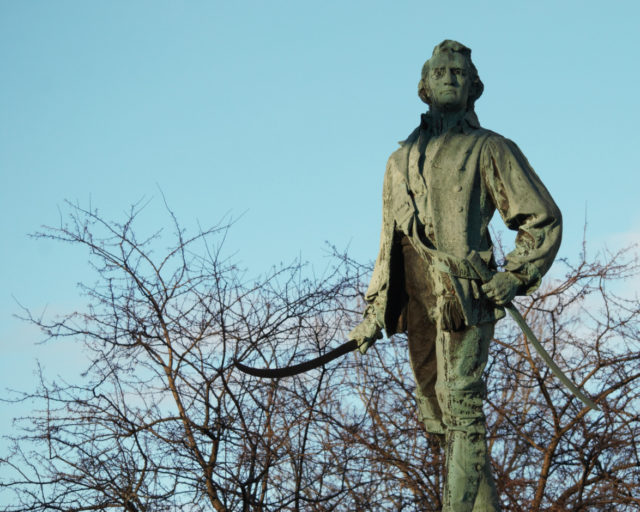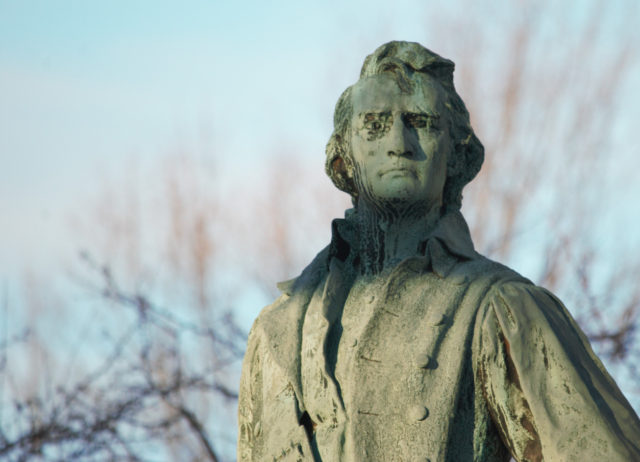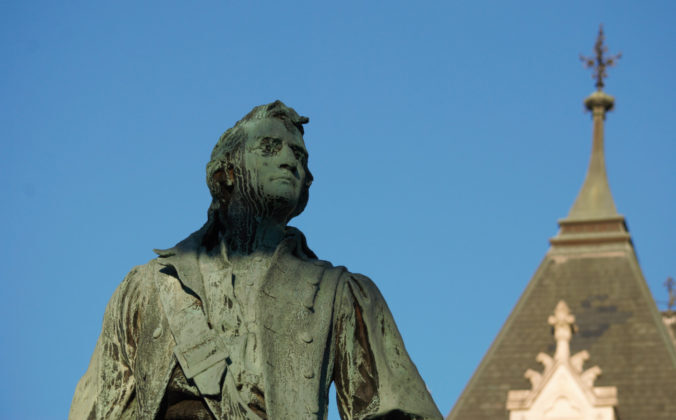Col. Thomas Knowlton (1740-1776) of Ashford, Connecticut is depicted by this bronze monument at the Connecticut State Capitol, created by Enoch Smith Woods of Hartford, who also made the Nathan Hale statue on the Wadsworth Atheneum grounds.

There is always the question of what makes certain people more deserving of others when it comes to monuments, but that’s not what this post is about. This is more of a “who the heck was this guy because I walk by the statue all the time and should probably know even though this was definitely not taught in school” post.
According to a piece written by Ashbel Woodward, published in The New-England Historical and Genealogical Register, Vol. 5, Issue 1, January 1861, Knowlton had some thoughts on snooty practices that were normal in his day. The publication states: “Although not a professor of piety” — hold on…what was he up to that was not pious? That sounds like a juicy story. Did he gamble? Cuss? Cheat on his wife? Return from battle with VD? I watched Bridgerton. I have an imagination. What did he do? You can’t just drop a hint like that and move along, Ashbel.
“Although not a professor of piety,” Ashbel Woodward wrote, “he was a punctual attendant at church, and was ever ready to lend a helping hand to encourage enterprises of benevolence and humanity.”
I’m not sure if joining Israel “Wolf Killer” Putnam’s company to fight the Spanish at the Battle of Havana in Cuba counted as one of the ways he encouraged enterprises of benevolence, but he did that. Basically, since age 15, he put himself in the middle of one battle or another.
The most interesting of these battles, however, was the culture war playing out in days of yore.

As Woodward put it, Knowlton was of a “generous nature” whose “expansive sympathies rais[ed] him above the narrow bigotry to sects.” It was this which “prompted him to take a bold though modest stand against the religious intolerance at that time in many parts of New England unfortunately too rife.” He saw outside of a church in Ashford people gathering around a whipping post. Like anyone would, he asked what was up. This is how he learned that “a culprit was to be flogged for non-attendance at church and the non-payment of tithes.” Gross. TK didn’t stop the flogging, but he threw his coat over the accused to lessen the blows.
Knowlton also shot people in battle and despite his wife’s pleading for him to stay home to help care for the kids (there were nine in all), he continued to find causes that would draw him away. To be fair, one of his older sons was with him at the Battle of Harlem Heights (American Revolutionary War) when Knowlton was fatally shot — either in the head or back, depending on which source you believe. Somewhere in the hour of life remaining after his wound, Col. Knowlton told junior to stop fussing over him because he was a goner, and go do more fighting.
Less than a week later, Nathan Hale — who had been gathering intelligence as part of Knowlton’s Rangers, apparently America’s first military intelligence operation — was executed.
Anyway, Knowlton’s name was carved onto a family marker in the Westford Hill Cemetery, though his body remained elsewhere. It’s said he was buried in an unmarked grave at the intersection of 143rd St. and St. Nicholas Avenue in New York, but those roads do not intersect.
Fun fact: Today the June Norcross Webster Scout Reservation sits on part of what was the Knowlton family’s 400 acre farm.


